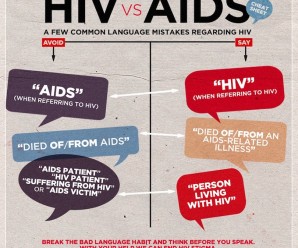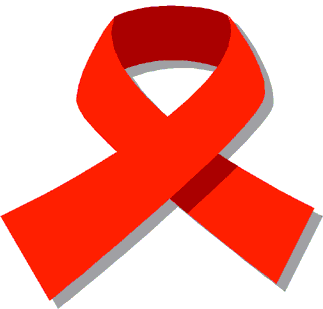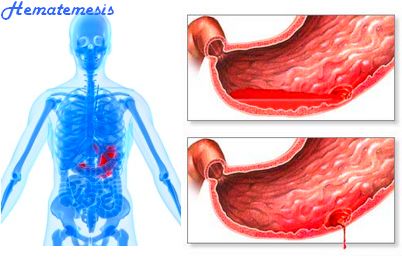New WHO Recommendations on HIV prevention

30 November 2009 — On the eve of World AIDS Day, WHO is releasing new recommendations on treatment, prevention and infant feeding in the context of HIV, based on the latest scientific evidence.

WHO now recommends earlier initiation of antiretroviral therapy (ART) for adults and adolescents, the delivery of more patient-friendly antiretroviral drugs (ARVs), and prolonged use of ARVs to reduce the risk of mother-to-child transmission of HIV. For the first time, WHO recommends that HIV-positive mothers or their infants take ARVs while breastfeeding to prevent HIV transmission.
An estimated 33.4 million people are living with HIV/AIDS, and there are some 2.7 million new infections each year. Globally, HIV/AIDS is the leading cause of mortality among women of reproductive age.”These new recommendations are based on the most up to date, available data,” said Dr Hiroki Nakatani, Assistant Director General for HIV/AIDS, TB, Malaria and Neglected Tropical Diseases at the World Health Organization. “Their widespread adoption will enable many more people in high-burden areas to live longer and healthier lives.”
New treatment recommendations
In 2006, WHO recommended that all patients start ART when their CD4 count (a measure of immune system strength) falls to 200 cells/mm3 or lower, at which point they typically show symptoms of HIV disease. Since then, studies and trials have clearly demonstrated that starting ART earlier reduces rates of death and disease. WHO is now recommending that ART be initiated at a higher CD4 threshold of 350 cells/mm3 for all HIV-positive patients, including pregnant women, regardless of symptoms.
WHO also recommends that countries phase out the use of Stavudine, or d4T, because of its long-term, irreversible side-effects. Stavudine is still widely used in first-line therapy in developing countries due to its low cost and widespread availability. Zidovudine (AZT) or Tenofovir (TDF) are recommended as less toxic and equally effective alternatives.
The 2009 recommendations outline an expanded role for laboratory monitoring to improve the quality of HIV treatment and care. They recommend greater access to CD4 testing and the use of viral load monitoring when necessary. However, access to ART must not be denied if these monitoring tests are not available.
Preventing mother-to-child transmission and improving child survival
In 2006, WHO recommended that ARVs be provided to HIV-positive pregnant women in the third trimester (beginning at 28 weeks) to prevent mother-to-child transmission of HIV. At the time, there was insufficient evidence on the protective effect of ARVs during breastfeeding. Since then, several clinical trials have shown the efficacy of ARVs in preventing transmission to the infant while breastfeeding. The 2009 recommendations promote the use of ARVs earlier in pregnancy, starting at 14 weeks and continuing through the end of the breastfeeding period.
WHO now recommends that breastfeeding continue until the infant is 12 months of age, provided the HIV-positive mother or baby is taking ARVs during that period. This will reduce the risk of HIV transmission and improve the infant’s chance of survival.
“In the new recommendations, we are sending a clear message that breastfeeding is a good option for every baby, even those with HIV-positive mothers, when they have access to ARVs,” said Daisy Mafubelu, WHO’s Assistant Director General for Family and Community Health.
National health authorities are encouraged by WHO to identify the most appropriate infant feeding practice (either breastfeeding with ARVs or the use of infant formula) for their communities. The selected practice should then be promoted as the single standard of care.
Benefits and challenges
An earlier start to antiretroviral treatment boosts the immune system and reduces the risks of HIV-related death and disease. It also lowers the risk of HIV and TB transmission.
The new prevention of mother to child transmission (PMTCT) recommendations have the potential to reduce mother-to-child HIV transmission risk to 5% or lower. Combined with improved infant feeding practices, the recommendations can help to improve child survival.
The main challenge lies in increasing the availability of treatment in resource-limited countries. The expansion of ART and PMTCT services is currently hindered by weak infrastructure, limited human and financial resources, and poor integration of HIV-specific interventions within broader maternal and child health services.
The recommendations, if adopted, will result in a greater number of people needing treatment. The associated costs of earlier treatment may be offset by decreased hospital costs, increased productivity due to fewer sick days, fewer children orphaned by AIDS and a drop in HIV infections.
Another challenge lies in encouraging more people to receive voluntary HIV testing and counselling before they have symptoms. Currently, many HIV-positive people are waiting too long to seek treatment, usually when their CD4 count falls below 200 cells/mm3. However, the benefits of earlier treatment may also encourage more people to undergo HIV testing and counselling and learn their HIV status.
WHO, in collaboration with key partners, will provide technical support to countries to adapt, adopt and implement the revised guidelines. Implemented at a wide scale, WHO’s new recommendations will improve the health of people living with HIV, reduce the number of new HIV infections and save lives.
Changes in Recommendations
Specific new treatment recommendations from the WHO include the following:
- Regardless of symptoms, ART should be started at a higher CD4 cell count threshold of 350 cells/mm3 for all HIV-positive patients, including pregnant women. This is a change from the 2006 recommendation to initiate ART at a CD4 cell count of 200 cells/mm3 or below, when most patients are symptomatic. The new recommendation is based on trials published since 2006 showing that earlier initiation of ART is associated with lower morbidity and mortality.
- Because of long-term, irreversible adverse effects, such as peripheral neuropathy and lipoatrophy, the use of stavudine (d4T) should be phased out in all countries. At present, developing countries still widely use stavudine as first-line treatment because of its low cost and widespread availability. Less toxic and equally effective alternatives to stavudine recommended by WHO are zidovudine (AZT) or tenofovir.
- To improve the quality of HIV treatment and care, laboratory monitoring should play an expanded role. Although WHO recommends improved access to CD4 cell count testing and the use of viral load monitoring as needed, the agency stresses that access to ART must not be denied in settings where these monitoring tests are unavailable.
Prevention of Mother-to-Infant Transmission
Two key approaches for prevention of mother-to-infant HIV transmission include lifelong ART for HIV-positive women in need of treatment and prophylaxis or the short-term provision of ARVs to prevent HIV transmission from mother to child. Specific new WHO recommendations regarding prevention of mother-to-infant HIV transmission and improving infant survival include that ARVs should be started earlier in pregnancy (at 14 weeks) and should continue until breast-feeding is completed. This is a change from the 2006 recommendation that ARVs be initiated in HIV-positive pregnant women in the third trimester, beginning at 28 weeks.
Therapeutic options include daily AZT for the mother and infant prophylaxis for 6 weeks after birth, with infant prophylaxis continued until the end of the breast-feeding period, or a 3-drug regimen for the mother taken during pregnancy and throughout the breast-feeding period, as well as infant prophylaxis until 6 weeks of age.
Although evidence was insufficient in 2006 regarding the protective effect of ARVs during breast-feeding, several studies have subsequently shown that ARVs effectively prevent mother-to-infant transmission during breast-feeding.
Starting ARVs earlier stimulates the immune system, lowers the risks for HIV-related mortality and morbidity, and also reduces the risk for HIV and tuberculosis transmission.
- Lifelong ART should be started for all pregnant women with severe or advanced clinical disease or with a CD4 cell count at or below 350 cells/mm3, regardless of symptoms.
- To lower the risk for HIV transmission and improve infant survival, WHO now recommends that breast-feeding continue until 12 months of age, as long as the HIV-positive mother or infant is taking ARVs during the breast-feeding period. Two alternative options for HIV-positive women who breast-feed and are not taking ART are as follows: for a woman who received AZT during pregnancy, daily nevirapine is recommended for the child from birth until breast-feeding is complete; or for a woman who received a 3-drug regimen during pregnancy, the regimen should be continued until breast-feeding is complete.
“In the new recommendations, we are sending a clear message that breast-feeding is a good option for every baby, even those with HIV-positive mothers, when they have access to ARVs,” said Daisy Mafubelu, WHO’s assistant director-general for family and community health.
WHO is now urging national health authorities to determine whether breast-feeding with ARVs or the use of infant formula is the most appropriate infant feeding practice for their communities and to promote the selected practice as the single standard of care.
These new recommendations for prevention of mother-to-infant HIV transmission may reduce that risk to 5% or lower. When implemented along with better infant feeding practices, the new recommendations may improve infant and child survival.
“In countries not affected by HIV, it is estimated that improving infant feeding practices could reduce child mortality by up to 19%,” the new guidelines state. “In HIV-affected populations, the impact could be even greater if interventions that reduce HIV transmission through breastfeeding could be successfully linked with strategies that improve feeding practices not just for HIV-exposed infants but also the general population. However, achieving this linkage has been confounded by the complexity of identifying the most appropriate infant feeding practice according to the household and social circumstances of mothers.”
Source: WHO



